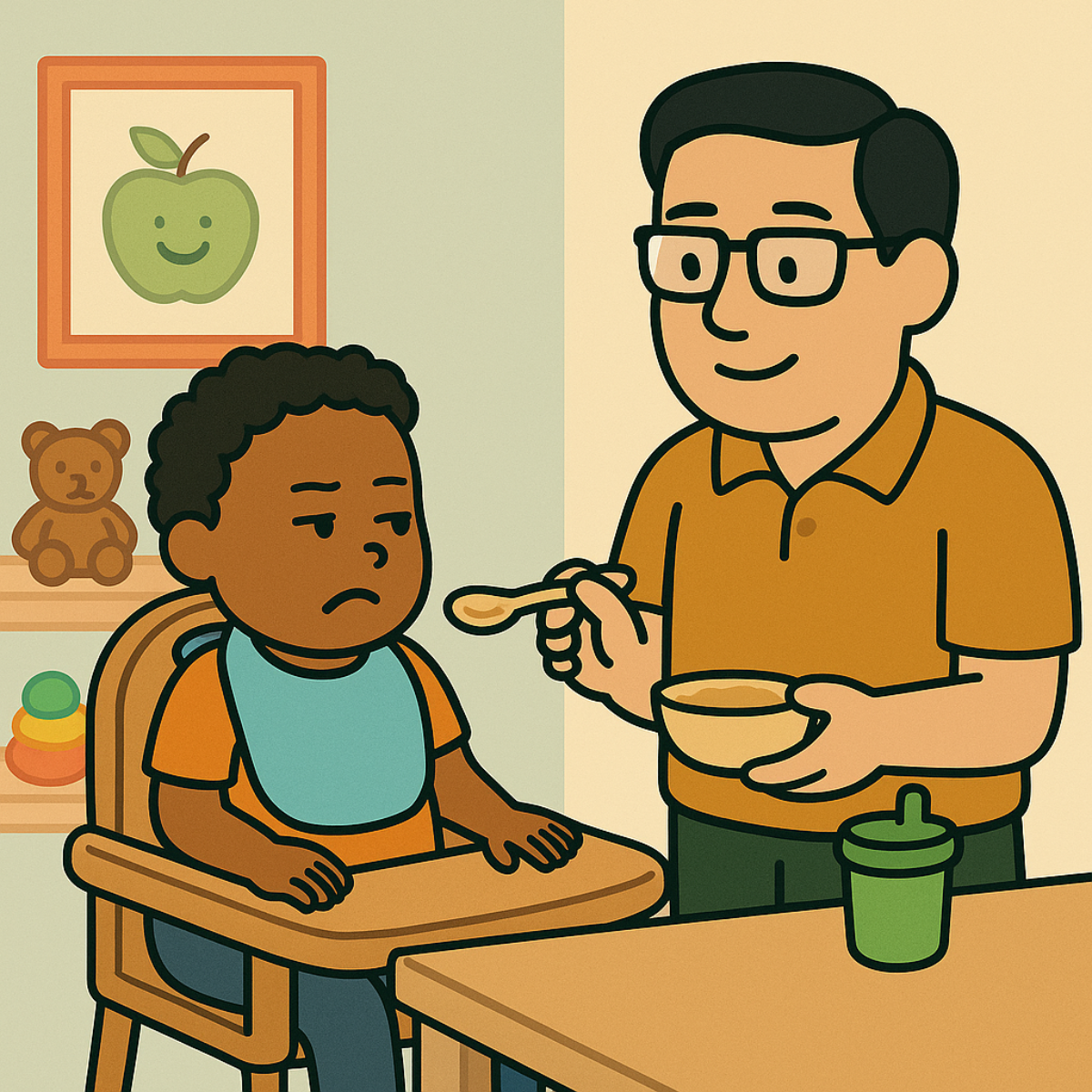7-minute read
That First Feeding Case Feeling…
You walk into the therapy room, spoon in one hand, visual schedule in the other—and there’s a toddler across from you turning their head, refusing every bite. Your first instinct? Panic. But here’s the truth: if you’re a new speech-language pathologist (or SLPA) stepping into feeding therapy, you’re not alone in feeling unsure.
Feeding therapy is incredibly rewarding, but it’s also complex. You’re not just helping a child eat—you’re supporting their sensory development, oral motor skills, emotional regulation, and family dynamics. It can feel overwhelming at first—but with the right tools, guidance, and mindset, you can thrive.
Starting your feeding therapy journey as an SLP? This guide simplifies what you need to know—from essential tools and tips to trusted strategies and credible resources—so you can confidently support pediatric feeding and swallowing. Plus, get our free therapy quick sheets to use during sessions.
Affiliate Disclosure: As an Amazon Associate, I earn from qualifying purchases. This means if you click a link and purchase a product, I may earn a small commission—at no extra cost to you. I only recommend tools I believe are valuable to therapy practice.
Let’s dive in.
What Is Feeding Therapy, Really?

Feeding therapy goes far beyond “getting kids to eat more.” As a speech-language pathologist, you’re trained to evaluate and treat the underlying skills needed for safe, efficient, and enjoyable feeding.
That includes:
- Strengthening oral motor skills for chewing and swallowing
- Managing sensory sensitivities or aversions
- Encouraging variety and volume in food acceptance
- Educating families on pacing, cues, and realistic goals
- Collaborating with interdisciplinary team members when necessary
Feeding therapy may look different across settings—from NICU follow-ups to early intervention home visits—but the principles remain the same: safe intake, skill building, and caregiver involvement.
For a foundational overview, explore ASHA’s Pediatric Feeding and Swallowing Guidelines
Start with the Right Tools

The good news? You don’t need a closet full of expensive gadgets. Here are some beginner-friendly, trusted tools you’ll likely use often:
- ARK Z-Vibe: A must-have oral motor tool for sensory input and pre-feeding exercises.
- Chewy Tubes Set: Great for jaw strength, coordination, and reducing biting behaviors.
- TalkTools Honey Bear Straw: Ideal for teaching controlled straw drinking with limited flow.
- Maroon Spoons: A classic for safe, shallow spoon feeding.
- ezpz Tiny Spoon Set: Soft silicone spoons that promote independence and reduce gag triggers.
- Food Scissors: Help cut up food into manageable bites right before or during sessions.
These tools help build oral tolerance, reduce sensory defensiveness, and support developmental readiness.
Understand Oral Motor & Sensory Foundations

Before working on “what” to eat, SLPs must understand “how” the child processes food orally and sensory-wise. These foundational factors often explain many feeding challenges:
- Weak jaw, lip, or tongue muscles
- Hypersensitive gag reflex or aversive textures
- Limited oral exploration or mouthing in infancy
- Excessive drooling or messy mealtime behavior
That’s where oral motor exercises and sensory-based strategies come in. You might use vibration for stimulation, chewy tubes for jaw stabilization, or soft spoons to build tolerance. Sessions should be playful, exploratory, and low-pressure.
Curious about integrating sensory strategies? Check out the SOS Approach to Feeding
Create a Consistent Mealtime Setup

Children thrive on structure and predictability—especially when food is involved. Whether you’re working in a clinic, home, or school setting, try to keep the environment calm, familiar, and supportive.
Here’s how:
- Use a visual schedule or picture sequence to set expectations
- Stick to the same feeding chair, plate, and utensils each time
- Minimize distractions (no screens, bright lights, or loud noise)
- Use adaptive tools like the ezpz Mini Mat to separate textures visually
Remember: consistency doesn’t mean rigidity. It simply reduces the stress response and increases participation.
Coach Caregivers with Compassion

Feeding issues often feel emotional for families. As an SLP, your role includes not just treating the child—but supporting the caregivers through education, validation, and realistic expectations.
Help parents:
- Recognize subtle cues (turning head, pushing away food)
- Understand progress isn’t always linear
- Use language like “Try this bite” instead of “You have to eat this”
- Explore books like Helping Your Child with Extreme Picky Eating to reinforce strategies at home
Caregiver involvement is one of the strongest predictors of feeding therapy success.
Know When to Refer Out

Even experienced SLPs don’t do feeding therapy alone. Know your scope—and when to refer to others on the care team:
- OTs – when posture, fine motor, or sensory processing issues are affecting feeding
- Nutritionists – for growth concerns, calorie tracking, or restrictive diets
- GI Specialists or ENTs – for signs of reflux, allergies, or structural concerns
You’re not “giving up” by referring—you’re strengthening outcomes through collaboration.
See this model in action via Stanford Children’s Interdisciplinary Feeding Program
Your Confidence Will Grow With Every Bite
Feeding therapy is dynamic. It’s messy, creative, and deeply rewarding. If you’re a new SLP starting out, remember: you don’t need to know everything on day one. Trust that your clinical skills, compassion, and continued learning will guide you.
Start with one child. One tool. One small goal. The rest will come.
Therapy Support You Can Use Right Now

Grab your FREE Quick Reference Sheets for OT, PT, and ST—designed to help you during sessions with feeding tools, intervention ideas, and treatment tips.
Looking for something more in-depth?
Our growing series of therapy pocket guides offer expanded content, strategies, and printable tools for busy rehab professionals:
📘 OT Pocket Guide — Available now
🗣️ ST Pocket Guide — Releasing this month
📅 PT Pocket Guide — Coming October
Let’s Learn From Each Other
Do you have a favorite feeding therapy tip or go-to tool for new SLPs? What helped you feel more confident when starting out?
Drop your insights or questions in the comments below—we learn best when we learn together.

Leave a Reply